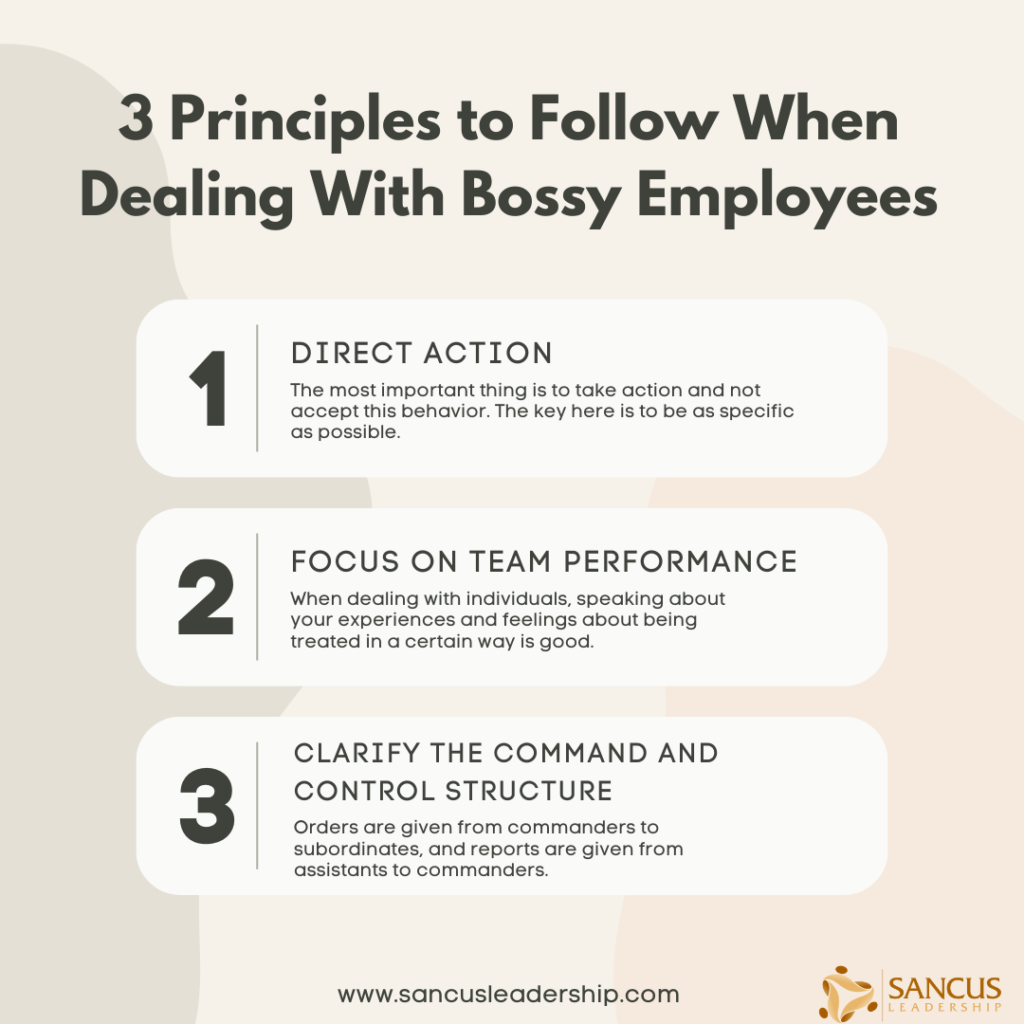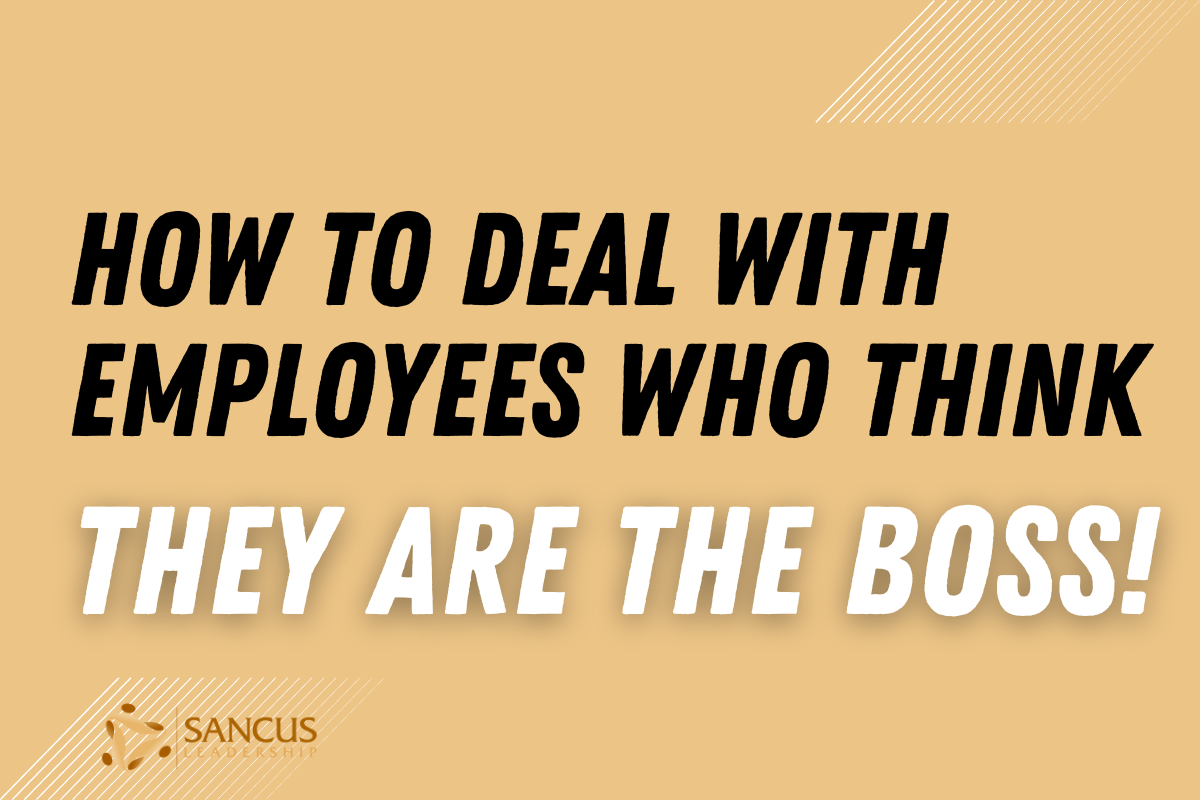Most of us have worked with people who seem to think that they are the boss, they will tell you what to do and how to do it, and they will do it in an authoritarian manner instead of a friendly one. They annoy us, and we just want them to shut up. So what do we do with employees who think they are the boss?
To deal with employees who think they are the boss, you should follow these three principles: direct action, focus on performance, and command and control structure. This will ensure that the issues are addressed, and conflicts are minimized.
This topic is personal, and you can relate to the stories I will tell, so today, I want to share some ideas and stories that will help you deal with bossy employees.
The Biggest Mistake When Dealing With a Bossy Employee

There is one rule that I have yet to be able to deny its truthfulness; the rule is that we get what we accept in life. This means that whatever we decide to love in our lives will continue; we’ll continue to exist. And the things we do not permit will most likely stop living.
When dealing with a bossy employee, the biggest mistake I see is that people know this behavior is unacceptable but do nothing about it. You have probably heard the advice, “Go along to get along,” but I think this is some BS advice.
If you go along with this type of behavior, it is an implicit acceptance and a way to reinforce that behavior, and if there is one thing that psychology has taught me, it is that you will get more of whatever it is that you promote.
This is the power of feedback; if we tell people that we appreciate something they do, they will do more of that, and if we tell them we don’t enjoy something, they will most likely do less. This is not only good leadership, but it is also good friendship.
Consequences of Bossy Employees

When we allow employees to be a boss, we are at the same time stripping the legit leader from their role of making decisions and taking responsibility. It usually leads to decreased productivity, morale, employee conflict, and sometimes even legal issues.
Often, the increase in productivity comes from the employee making decisions that are not in line with the leader; this means that tasks will usually have to be redone or scrapped entirely.
A few things annoy people as much as wasting their time; this is why redoing tasks or finishing unnecessary functions due to an employee’s initiative will most likely lead to conflict among employees.
It can be an even bigger problem if the decisions made by the employee are against rules and regulations or break safety standards.
3 Principles to Follow When Dealing With Bossy Employees

Since every employee and situation is unique, I prefer principles instead of a step-by-step approach. These principles will help you make correct decisions in dealing with a situation like this before it becomes toxic and detrimental to your team.
1. Direct Action

As we have discussed above, the most important thing is to take action and not accept this behavior. The key here is to be as specific as possible, even mentioning that you think they behave as mini boss and you are still determining whether or not that is their role.
A great way to approach this is by assuming that he or she is actually on your side trying to help you, and for her to assist you even better, there are a few things you need to discuss.
You want to avoid creating conflict and an offensive discussion; this will most likely not lead to a beneficial outcome; instead, enter the situation and debate thinking that you have something to learn from this person.
After all, who knows? Maybe you’re wrong.
2. Focus on Team Performance

When dealing with individuals, speaking about your experiences and feelings about being treated in a certain way is good. But it is slightly different when talking about bossy people; they often refer to performance or other business indicators as reasoning for their actions.
Instead of doing the traditional feedback way of telling them how you feel and how their actions impact you, you can focus on how their actions affect the team’s performance. After all, they are trying to be the boss, So they probably strive for higher performance.
3. Clarify the Command and Control Structure

In the military, the command and control structure looks like this, orders are given from commanders to subordinates, and reports are given from assistants to commanders.
Everything else is recommendations that the commander should implicitly or explicitly approve; this means that a random employee/soldier cannot give orders to the same ranked peer. On the other hand, he or she can recommend another soldier that something needs to be done, But that requires approval from the commander.
This is often lacking in the civilian world; some feel it needs to be more relaxed, which I think it is. With this type of leadership, it is not easy for employees to say, that’s a good idea. I’ll run that by my boss and see if we should do that.
This way of communicating with bossy employees is incredibly effective since it stops their attempt to corrupt the company’s authority.



